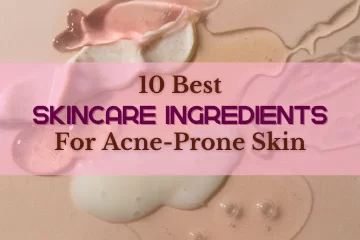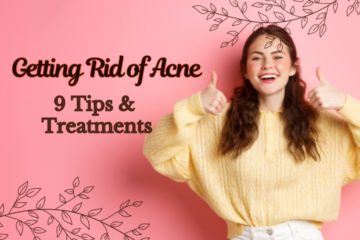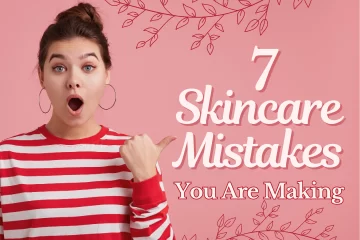All About Hyper-Pigmentation (Causes, Prevention, Types & Treatment)
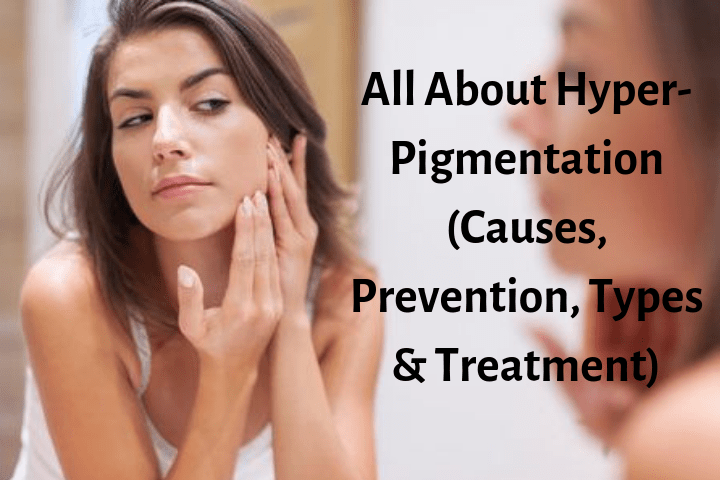
What Is Hyper-Pigmentation?
Hyperpigmentation is a medical term used to describe darker patches of skin. These patches result from excess melanin (the pigment that gives skin its color) production, which can be caused by everything from acne scars and sun damage to hormone fluctuations.
I have gone through a severe condition of PIH(Post Inflammatory Hyperpigmentation). Hyperpigmentation is a common skin condition and it effects people of all skin types. Almost everyone goes through hyperpigmentation at some point in their lives. Although hyperpigmentation is harmless, some people wish to get rid of it. There is a range of possible treatment methods and home remedies that people can try.
Topics discussed are below, you can skip to them directly:
- Causes Of Hyperpigmentation
- Prevention Methods For Hyperpigmentation
- Types Of Hyperpigmentation
- Treatment For Hyperpigmentation
Causes Of Hyperpigmentation
There are many causes of hyperpigmentation but I will be sharing two of the most common ones. These are:
Exposure To UV Rays Or Sunlight
This is a very common external cause of hyperpigmentation that is neglected by most of us. Overexposure to UV rays can cause severe skin damaging conditions like skin cancer. Always make sure to wear a good amount of SPF to protect your skin from these harmful rays.
Hormonal Imbalances
Hormonal imbalance is a common internal that can cause hyperpigmentation. The cause for hormonal imbalance can be too much of junk food, improper sleep, pregnancy or other health-related issues.
Any of these factors can increase the pigment cells in the skin or activate the cells to produce more melanin.
Prevention Methods For Hyperpigmentation
Now let’s discuss a few factors that can help us in prevention of hyperpigmentation. The first and most important measure you should take is preventing hyperpigmentation. As we all know:
“An ounce of prevention is worth a pound of cure”
I am sharing a few important measures you can take in preventing hyperpigmentation to become worse than it already is or to even prevent it from occurring when you have clear skin.
Wear SPF Daily
You must wear a good amount of SPF daily and not just in the morning or daylight but it is equally important in the evening and night time. This is because we have UV rays all around us and always close to us in the form of our cell phones, laptops, desktop computers at work, etc. Sunscreen must be applied all over the face and neck in a thin layer. You must reapply sunscreen after 3-4 hours to maintain the protection. You must be using a minimum of SPF 30 or higher depending on the weather conditions.
Propper Cleansing
You must always make sure to properly cleanse your skin twice a day (in the morning and before going to bed). Use a cleanser that suits your skin type (oily, combination or dry). Choosing the right cleanser will make a world of a difference. If you wear makeup, make sure to double cleanse. cleansing helps because it prevents dirt build up, that can worsen your hyperpigmentation condition.
Don’t Stress Out
Stressing out is one of the major reasons for hyperpigmentation. These days stressing out has become our second nature. No matter what you are facing in life, just take a step back, take a deep breath and listen to your inner self. Do what makes you happy and chill. Don’t let something that is causing you stress, spoil your beauty. Trust me it is not worth it.
Other than that you can incorporate a diet plan that is rich in vitamin C and antioxidants to prevent and even cure hyperpigmentation.
Types Of Hyperpigmentation
There are many types of pigmentation in the skin but lets discuss a few that are the most common ones:
Age Spots
Age spots, also called lentigines, are caused by skin aging and skin’s exposure to the sun. They are dark brown spots on our skin. Aging can also cause uneven skin tone and change in skin texture, making the skin rough. We can prevent age spots by incorporating some kind of anti-aging products in our derm ritual (skin care routine) from the age of 24. And of course, SPF is a must.
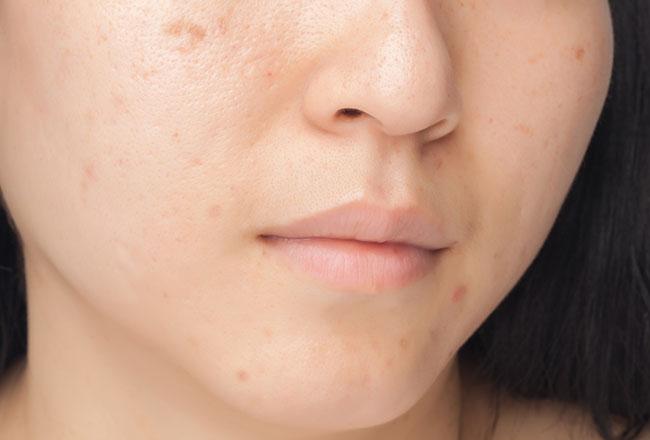
Freckles
Freckles are a typical common response to sunlight. You can see them as light brown spots on the skin. They often occur in people with fair and sensitive skin. Freckles are also considered as beauty marks by many people. Freckles can be prevented by using SPF.

Melasma
Melasma is a kind of hyperpigmentation that shows most commonly on the forehead, cheek or chin in the form of brown-ish patches. Factors that cause melasma are sunlight and hormonal imbalances. Melasma can sometimes fade away on its own.
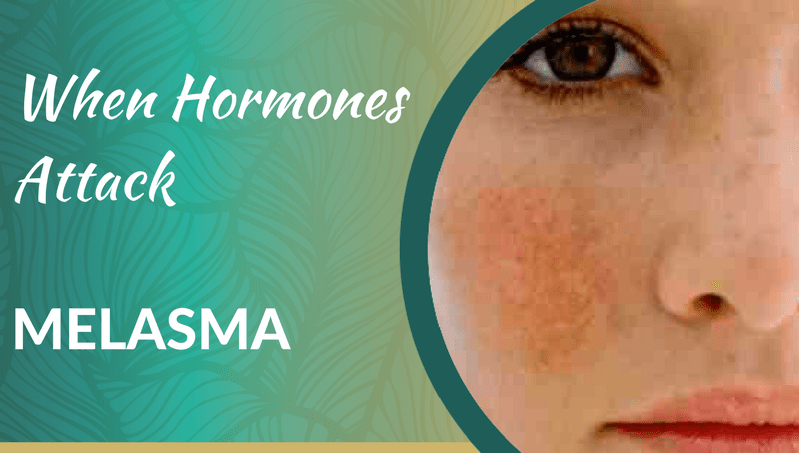
Post Inflammatory Hyperpigmentation (PIH)
This is the most common type of hyperpigmentation. This is a form of pigmentation left behind after we develop an allergy, injury, eczema or acne, etc. That is why it is called post-inflammatory hyperpigmentation.

Dark Circles
Last but not least, dark circles are also a type of hyperpigmentation. Dark circles are caused by stress, aging, improper sleeping patterns, hormonal changes, dry skin, etc. Dark circles can make you look dull and tired.

Treatment For Hyperpigmentation
There are many ways to treat hyperpigmentation, I can not discuss all of them in this post but I’ll make sure to write another post solely on treatments for hyperpigmentation. Let us discuss a few but effective ways that can help you treat hyperpigmentation.
Apple Cider Vinegar
This one is my favorite method and works best for oily skin type. Apple cider vinegar has high amounts of amino acids, mineral salts and acetic acid that help is fading of dark spots fast.
Make a solution of 1 part of apple cider vinegar to 1 part of water. For sensitive skin, you can take 1 part of apple cider vinegar to 2 parts of water.
Take a cotton ball, pad, or swab and dip it into the solution of apple cider vinegar and water, and apply it to all the affected areas. Apply it to all of your face, neck, and the areas where there are dark spots and pigmentation marks. Let the application stay on your skin overnight and wash it off in the morning.
Potato
Potatoes can help in curing hyperpigmentation. Crazy isn’t it!? It is because potato has the ability of light bleaching. Because of this, the spots, blemishes and even scars fade away. It contains starch which helps to reduce hyperpigmentation and make your skin glow naturally. Another ingredient in potato is the catecholase enzyme. This enzyme fights with skin discoloration and thus improves skin quality. Also, potatoes contain many vitamins like A, B, C and E that also help with age spots and wrinkles.
Simply grate some potato and squeeze out the juice from it. Now apply it on a clean face with the help of a cotton ball. The best time to apply is at night and leaving it over night to get faster results. Potato is hydrating so don’t worry about leaving it overnight. Wash it off in the morning.
Licorice Extract
Licorice extract may lighten hyperpigmentation. Research suggests that a licorice extract called glabridin can have anti-inflammatory, antioxidants, and skin-whitening effects. People can use creams containing glabridin on areas of hyperpigmentation. However, this ingredient cannot be used during pregnancy.
Aloe Vera
Aloe vera contains aloin, a natural depigmenting compound that has been shown to lighten skin and work effectively as a nontoxic hyperpigmentation treatment. Use aloe vera gel as a mask on a daily basis. If you use aloe vera gel directly from the aloe leaf, that will be more effective.
Chemical Exfoliators
Hyper-pigmentation can be reduced by chemical exfoliation. There are two types of chemical exfoliators, AHAs (Alpha Hydroxy Acids) and BHAs (Beta Hydroxy Acids).
Alpha Hydroxy Acids (AHAs)
AHAs work by gently exfoliating the top layer of the skin to remove dead skin cells so that new skin cells can take their place. As a result, using AHAs reveal healthy, younger looking skin. AHAs are derived from natural substances so it is suitable for all skin types. Using AHAs can tingle a little bit but that is totally normal.
Beta Hydroxy Acids (BHAs)
BHAs are oil soluble and thus can penetrate deeper into your skin than AHAs. They remove excess sebum that can cause breakouts, that will eventually lead to post inflammatory hyperpigmentation. Salicylic Acid is a form of BHA
Do not apply AHAs and BHAs on irritated, burnt or broken skin.
To Conclude:
- Hyperpigmentation is a common problem that can be solved by taking the correct measures.
- We must incorporate prevention methods for hyperpigmentation in our derm rituals.
- SPF is a must
- Keep your skin clean to prevent dirt build-up
- If you are facing a severe case of hyperpigmentation, please consult a professional.
I have so much more to write on hyperpigmentation. I’ll make sure to discuss more on treatments of hyperpigmentation in one of my next posts. Let me know if this post was helpful 🙂
Sign Up For More Similar Content
